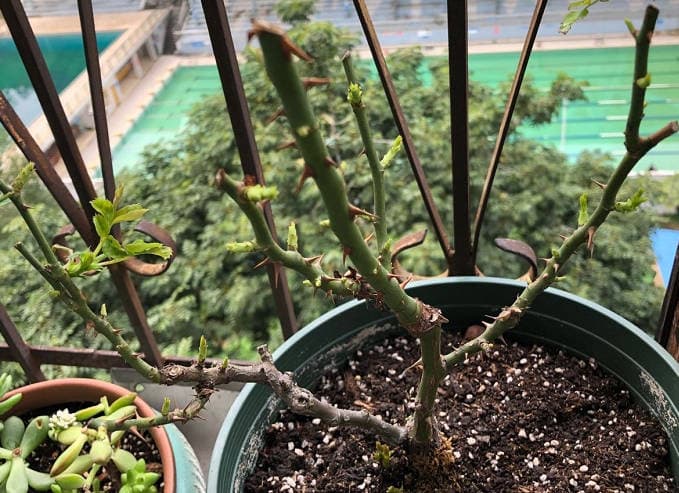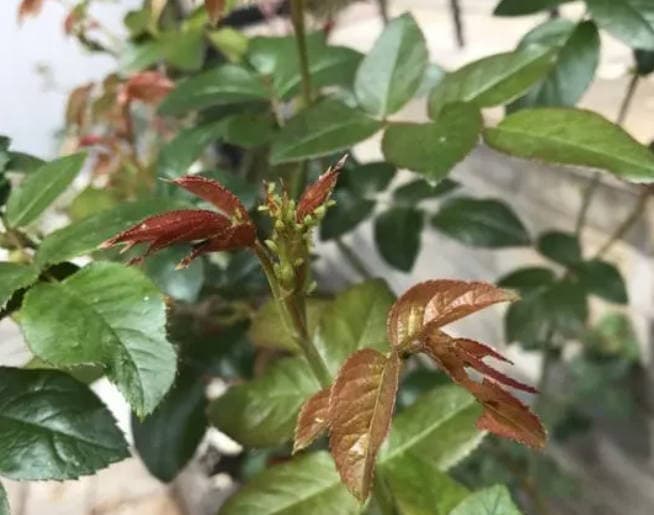3 Major Reasons Your Roses Die (And How to Save Them)
Many novice rose growers experience the problem of gradual wilting of the foliage, which eventually leads to the death of the entire plant. The following are the three main causes of this phenomenon and the corresponding solutions.
1. Excessive fertilizer leads to root damage

Problem Performance
Many gardening enthusiasts have difficulty mastering the proper concentration of fertilizer when using fertilizer, resulting in fertilizer damage. The initial manifestation is the edge and tip of the leaves dry, although the surface appears to be leaf damage, but in fact the root system has been damaged.
Progression
Once a rose has suffered root damage due to fertilizer damage, the ability to absorb nutrients will be affected, and the leaves will then begin to yellow, showing a weak state of malnutrition. If the rose continues to be cared for in a large pot at this point, with frequent watering and fertilizing, the rose will lose the opportunity to repair itself and the situation will continue to deteriorate, eventually leading to the death of the entire plant.
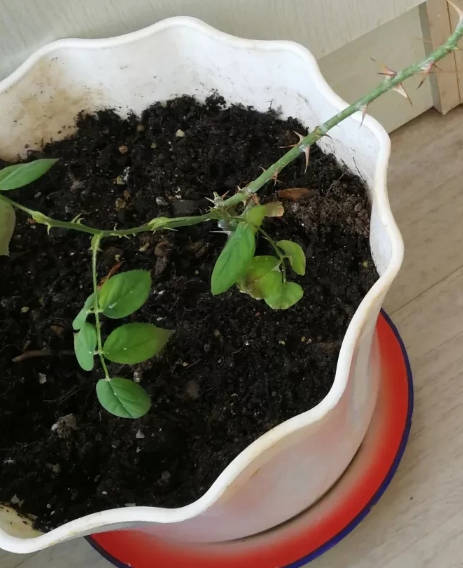
Solution
- Stop fertilizing immediately
- Rinse the soil with water to dilute the concentration of fertilizer.
- Replace part of the soil if necessary
2. Root rot caused by improper watering
Common mistakes
- Overwatering leads to waterlogging
- Cold watering of potted roses in the middle of the day in summer
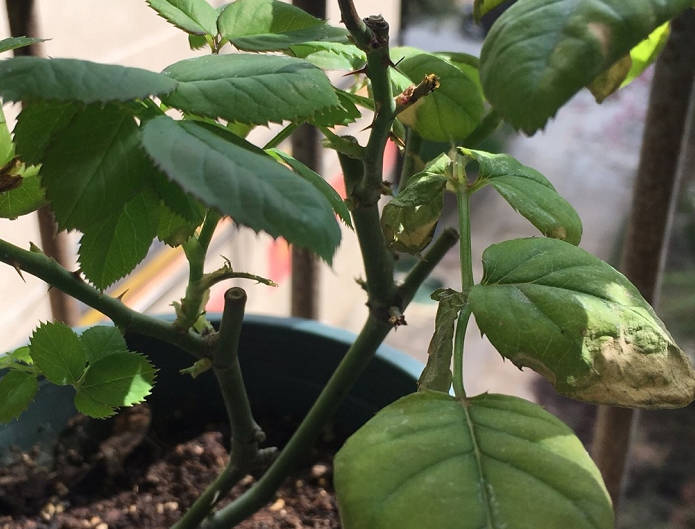
Consequences
These improper operations will damage the root system, especially in summer, the damaged root system will lead to poor nutrient absorption, iron deficiency yellow leaves. If left untreated, the plant will gradually wither and die.
Correct watering method
- Follow the principle of “see dry, see wet”.
- Choose morning or evening watering in summer
- Ensure that the potting soil is well drained
3、Insufficient light leads to poor growth
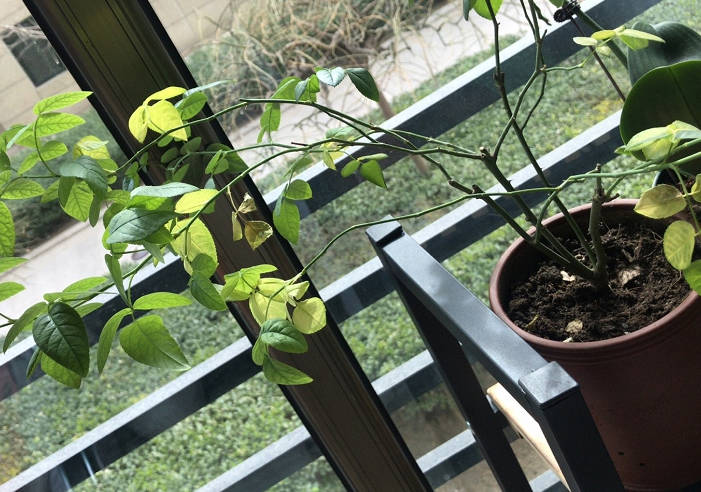
Affects performance
Even with proper care, roses may still experience wilting of new leaves, which is usually related to insufficient light. Roses are sun-loving plants and lack of light can lead to:
- Inefficient photosynthesis
- Nutritional deficiencies
- Thin and weak branches
- Fading of leaf color
The solution
- Move roses to a sunny location
- Ensure at least 6 hours of direct light per day
- If the environment does not provide enough light, it is recommended to plant shade-tolerant plants.
Rehabilitation of roses with damaged roots
Tips for changing pots
- Choose a smaller pot than the original one
- Try to keep the original soil and root system as much as possible
- Smaller pots are good for dry and wet circulation, and stimulate the growth of new roots.
Post-potting care
- Slow down the seedlings under diffused light first
- Gradually increase the light intensity
- Apply very dilute phosphate and potash fertilizers to promote root growth.
- If you are not sure about the concentration of fertilizer, it is recommended that you do not apply fertilizer for the time being.
Recovery Management
- Normal fertilization after the plant starts to grow again.
- Prune appropriately
- Maintain sufficient light
For plants weakened by insufficient light, the only solution is to increase light. If you really cannot provide enough sunlight, we suggest you consider planting other plants that are suitable for low-light environment.
Remember: Prevention is better than cure. With proper fertilization, watering and adequate light, your roses will thrive.


